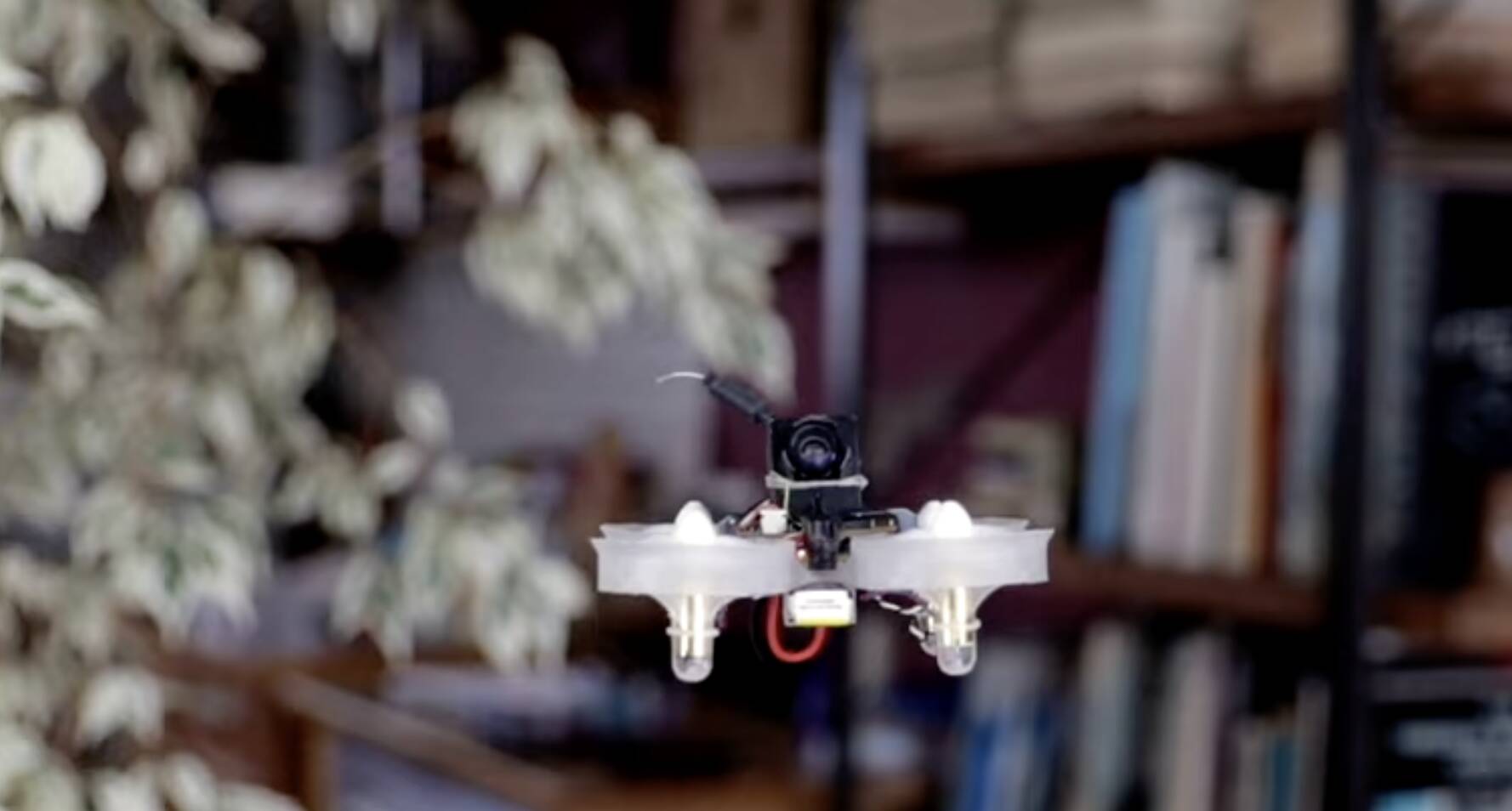Researchers have developed very lightweight solar-powered flying robots in a bid to overcome the limitations of small-scale drone flyers.
Weighing just 4.21 grams — roughly the same as a sugar cube — the so called CoulombFly has achieved sustained flight under natural sunlight conditions, by means of a new light-weight rotary engine.
In a paper published in Nature today, Mingjing Qi, associate professor at China’s Beihang University, and his colleagues describe a device which combines an electrostatic propulsion system consisting of a motor and a 10-centimeter propeller with a high-voltage power convertor and solar cells.
Their aim was to overcome some of the limitations associated with the current generation of tiny flying bots, which, though impressive in their scale, tend to afford flight times limited to around 10 minutes. Current designs, reliant on batteries and electric motors, start to lose efficiency as they get smaller, as factors like friction exert a relatively greater influence.
Qi and his team have devised an electrostatic propulsion system based around a motor, a 10-centimeter propeller, a high-voltage power convertor and solar cells. The motor is made up of a rotor and a stator. The stator combines eight pairs of alternating positive and negative electrodes arranged in a ring.
Each electrode has a brush attached to it, which transfers charge to the rotor blades. As a high direct-current voltage is applied to the electrodes, the resulting electrostatic fields drive the rotor as its blades alternately pass each positive and negative electrode, transferring charge (see video above).
“The sunlight-powered sustained flight demonstration represents a notable milestone in developing micro-air vehicles (MAVs) with long flight duration. Utilizing an electrostatic-driven propulsion system for flight is an innovative and effective method in MAVs and nano aerial vehicles and provides another option for vehicle design,” the authors said.
“Our system can substantially increase the endurance of MAVs, thus expanding their potential applications in the future, such as long-distance and long-duration aerial reconnaissance.”
They imagine even smaller MAVs being possible and have prototyped this tethered bot with a wingspan of eight millimeters.
However, they admitted their approach has limitations of its own as the model has no flight control and currently relies on vertical rails to stay steady. And, naturally with solar-only power it is susceptible to variations in sunlight. Nonetheless, the authors plan a solar cell and battery system to help it overcome these weaknesses.
Those with a pessimistic bent will be relieved to know that the lightweight design does evoke a certain flimsiness. It’s not time to get out the doomsday checklist just yet. ®

